Abstract
WHO's Expanded Programme on Immunization has significantly helped to reduce global morbidity and mortality from measles. Recently, some African countries with high vaccine coverage levels have reported measles outbreaks in children above the current target age group for immunization. Outbreaks such as these are to be expected, unless close to 100% of the population are immunized with a vaccine which is 100% effective. Success of an immunization programme requires identification of the distribution and ages of susceptible children and reduction of their concentration throughout the community. Priority should be given to urban and densely populated rural areas. In large urban areas, high coverage of infants must be achieved soon after the age at which they lose their maternal antibodies and become susceptible. This will be facilitated by the introduction of high-dose measles vaccines which can be given at 6 months of age. Where measles incidence is increasing among children aged over 2 years, immunization of older children may be considered during contacts with the health care system, or at primary school entry, if this does not divert resources from immunization of younger children. Health workers should be informed of the predicted changes in measles epidemiology following immunization. The collection, analysis and use of data on measles (vaccine coverage, morbidity and mortality) should be improved at all levels of the health care system in order to monitor the immunization programme's overall impact, identify pockets of low coverage, and allow early detection of and response to measles outbreaks.
Full text
PDF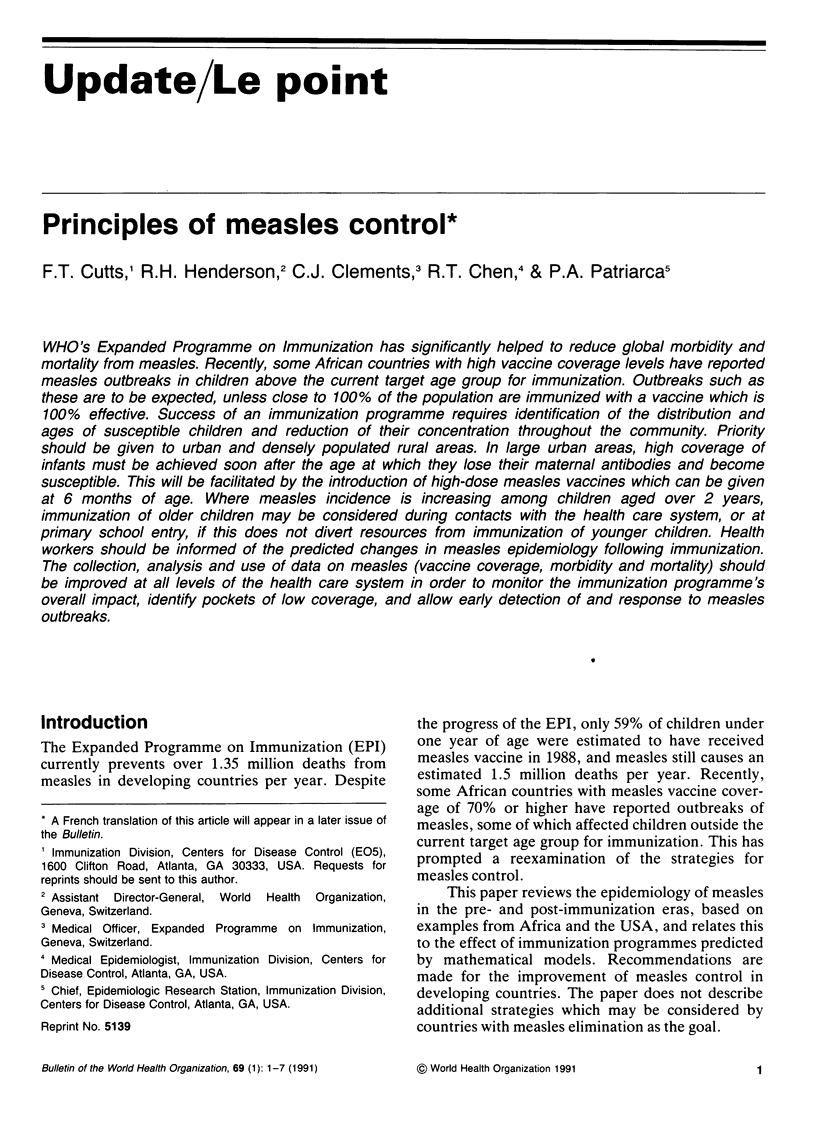
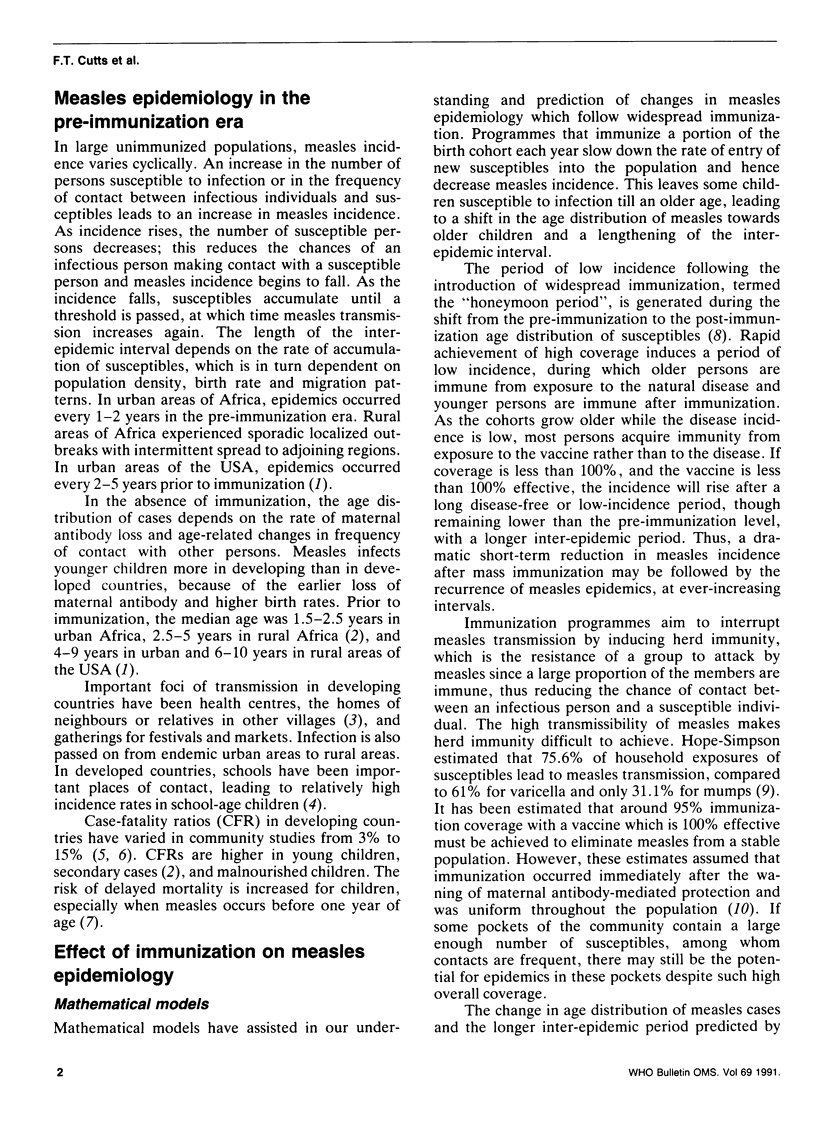
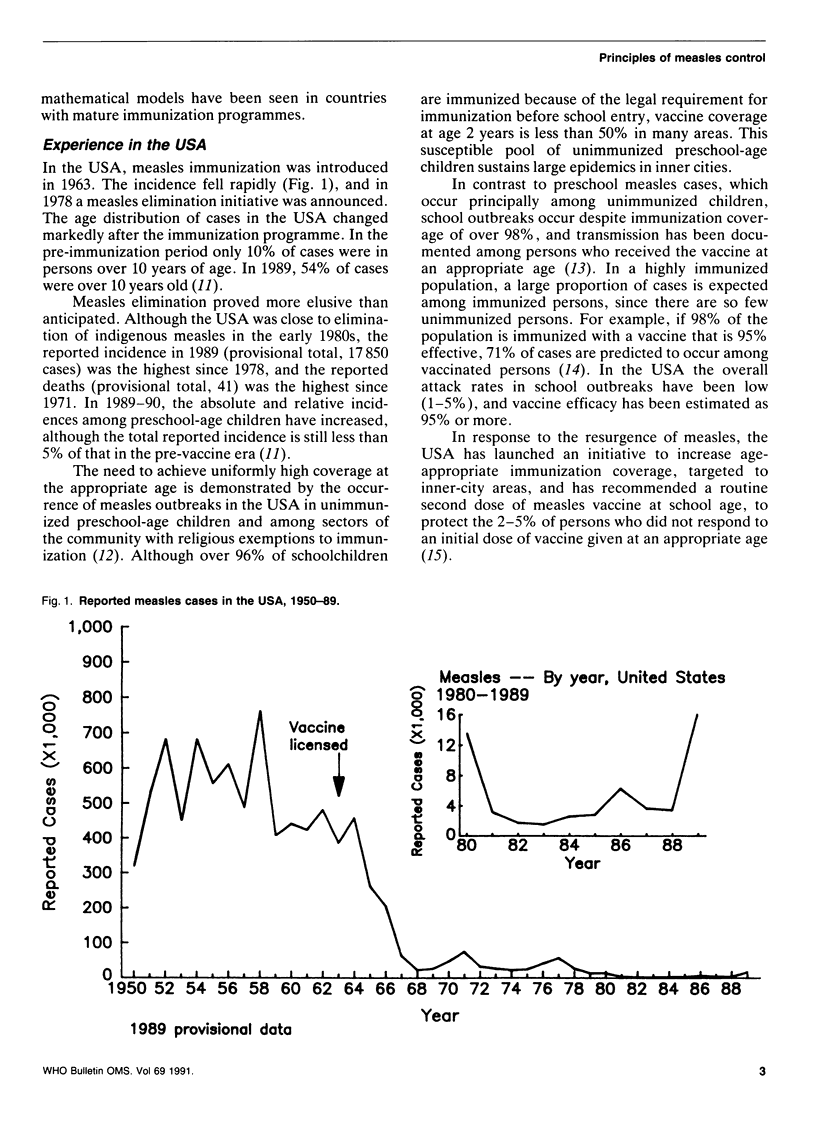
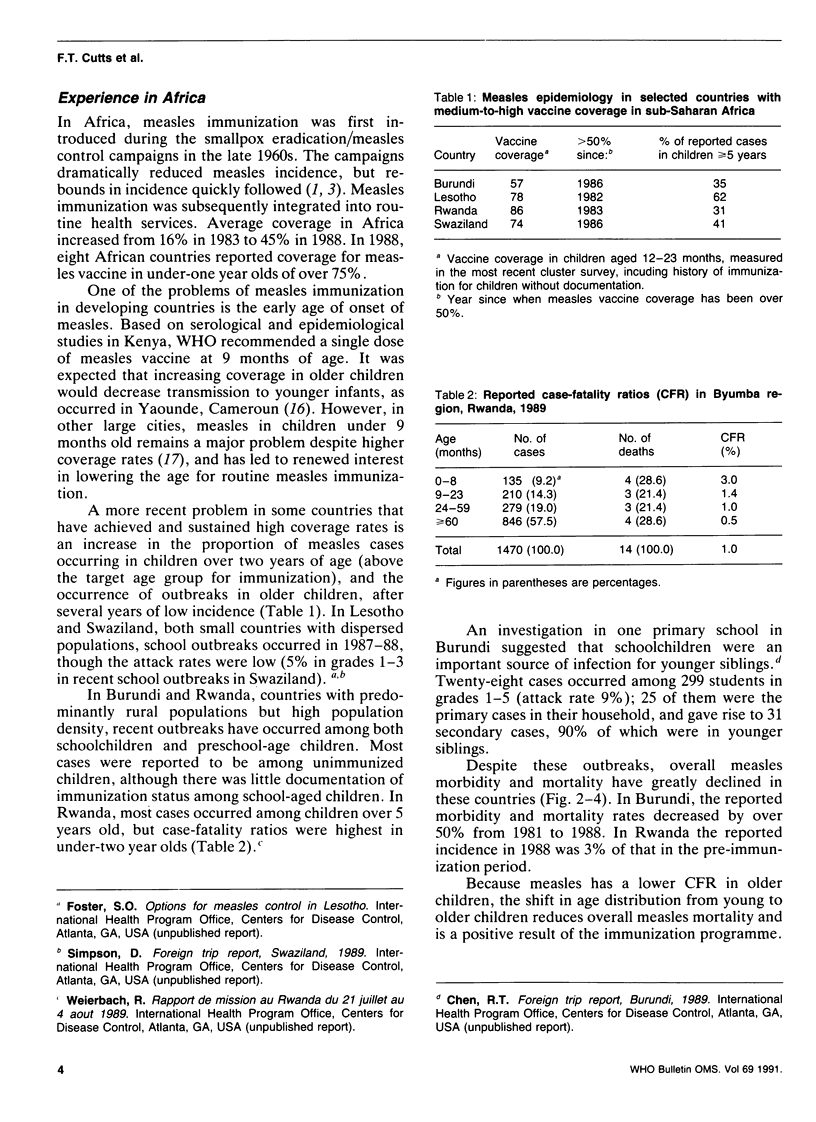
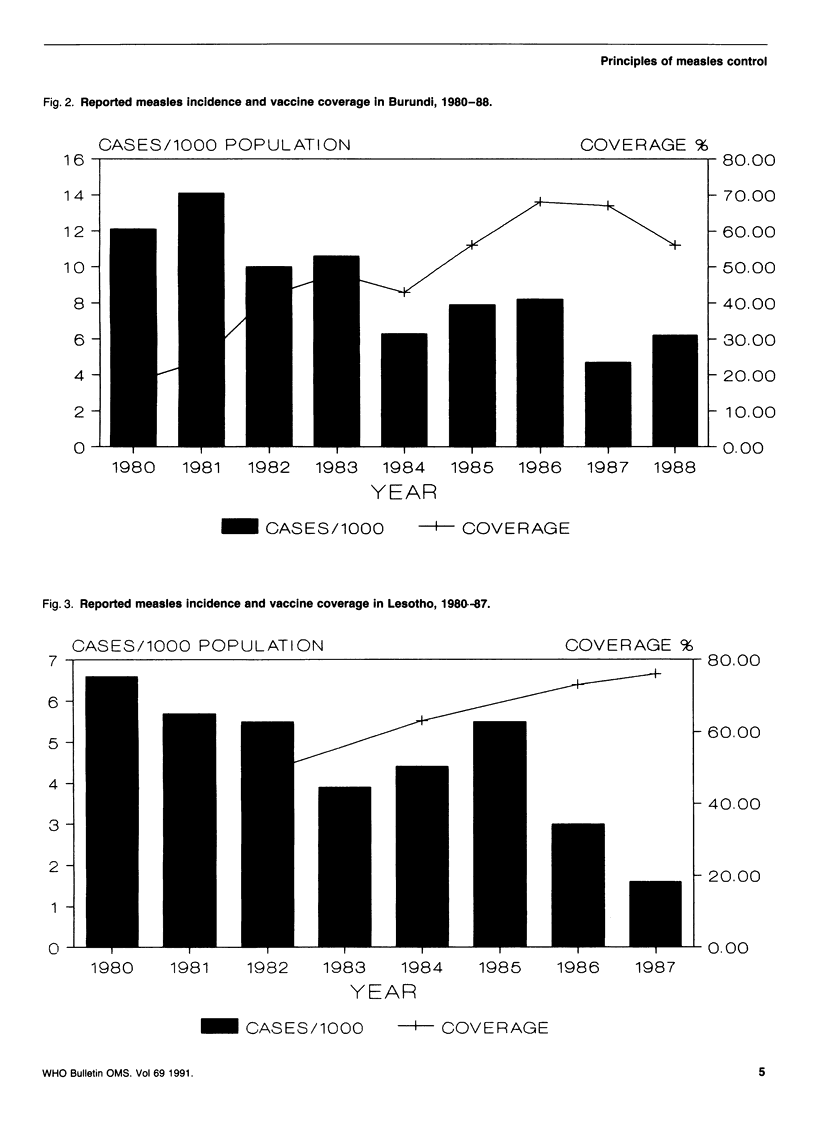
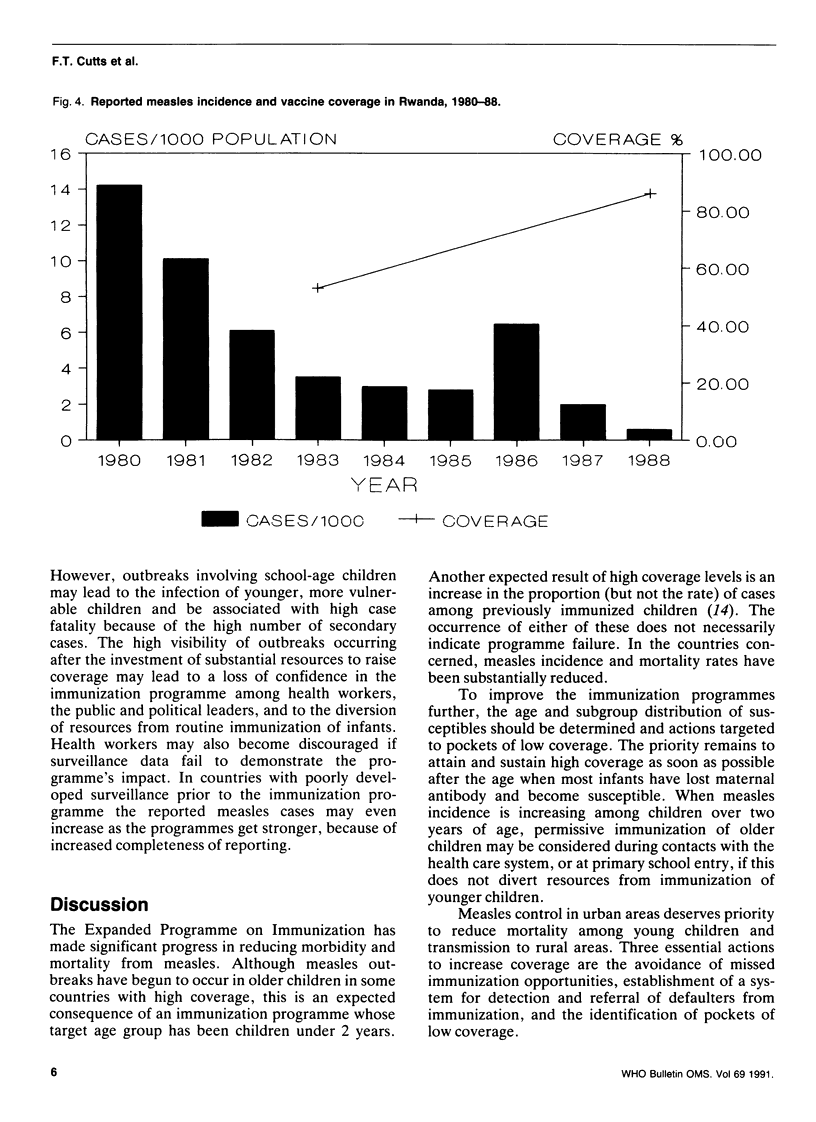
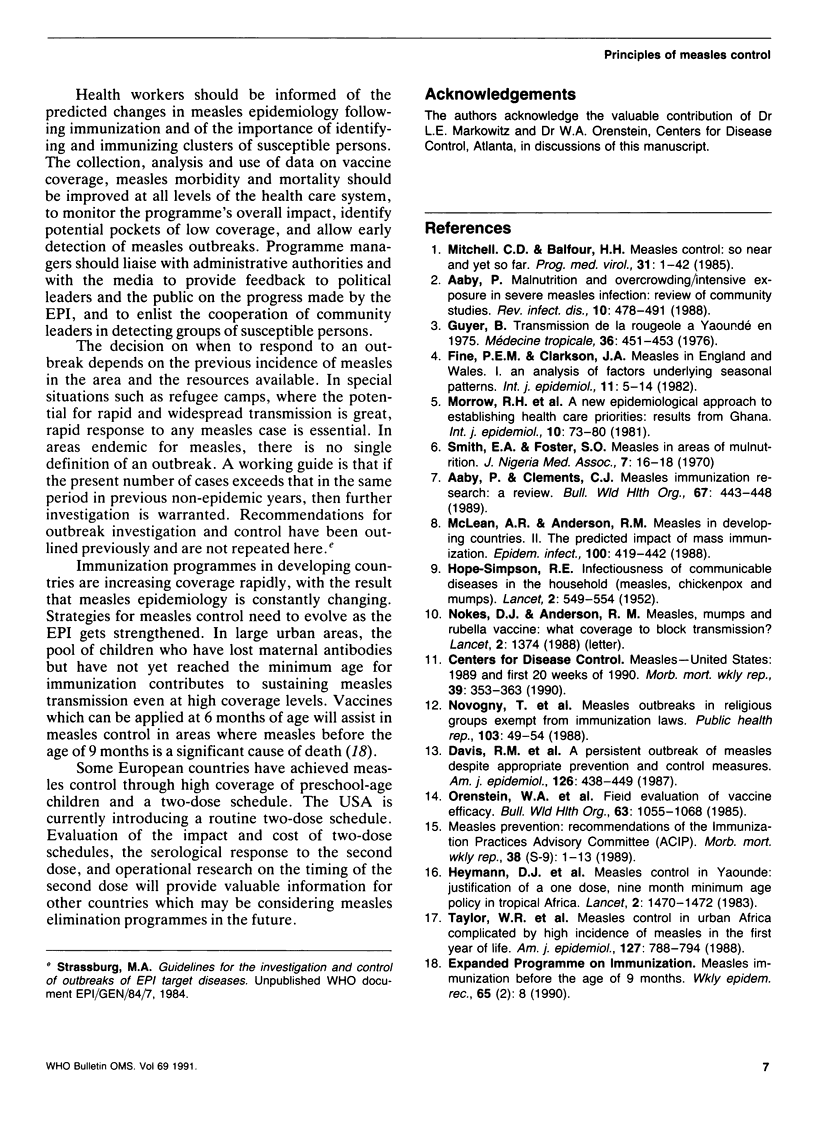
Selected References
These references are in PubMed. This may not be the complete list of references from this article.
- Aaby P., Clements C. J. Measles immunization research: a review. Bull World Health Organ. 1989;67(4):443–448. [PMC free article] [PubMed] [Google Scholar]
- Aaby P. Malnutrition and overcrowding/intensive exposure in severe measles infection: review of community studies. Rev Infect Dis. 1988 Mar-Apr;10(2):478–491. doi: 10.1093/clinids/10.2.478. [DOI] [PubMed] [Google Scholar]
- Centers for Disease Control (CDC) Measles--United States, 1989 and first 20 weeks 1990. MMWR Morb Mortal Wkly Rep. 1990 Jun 1;39(21):353-6, 361-3. [PubMed] [Google Scholar]
- Davis R. M., Whitman E. D., Orenstein W. A., Preblud S. R., Markowitz L. E., Hinman A. R. A persistent outbreak of measles despite appropriate prevention and control measures. Am J Epidemiol. 1987 Sep;126(3):438–449. doi: 10.1093/oxfordjournals.aje.a114675. [DOI] [PubMed] [Google Scholar]
- Fine P. E., Clarkson J. A. Measles in England and Wales--I: An analysis of factors underlying seasonal patterns. Int J Epidemiol. 1982 Mar;11(1):5–14. doi: 10.1093/ije/11.1.5. [DOI] [PubMed] [Google Scholar]
- Heymann D. L., Mayben G. K., Murphy K. R., Guyer B., Foster S. O. Measles control in Yaounde: justification of a one dose, nine month minimum age vaccination policy in tropical Africa. Lancet. 1983 Dec 24;2(8365-66):1470–1472. doi: 10.1016/s0140-6736(83)90813-9. [DOI] [PubMed] [Google Scholar]
- McLean A. R., Anderson R. M. Measles in developing countries. Part II. The predicted impact of mass vaccination. Epidemiol Infect. 1988 Jun;100(3):419–442. doi: 10.1017/s0950268800067170. [DOI] [PMC free article] [PubMed] [Google Scholar]
- Mitchell C. D., Balfour H. H., Jr Measles control: so near and yet so far. Prog Med Virol. 1985;31:1–42. [PubMed] [Google Scholar]
- Nokes D. J., Anderson R. M. Measles, mumps, and rubella vaccine: what coverage to block transmission? Lancet. 1988 Dec 10;2(8624):1374–1374. doi: 10.1016/s0140-6736(88)90920-8. [DOI] [PubMed] [Google Scholar]
- SIMPSON R. E. H. Infectiousness of communicable diseases in the household (measles, chickenpox, and mumps). Lancet. 1952 Sep 20;2(6734):549–554. doi: 10.1016/s0140-6736(52)91357-3. [DOI] [PubMed] [Google Scholar]
- Taylor W. R., Mambu R. K., ma-Disu M., Weinman J. M. Measles control efforts in urban Africa complicated by high incidence of measles in the first year of life. Am J Epidemiol. 1988 Apr;127(4):788–794. doi: 10.1093/oxfordjournals.aje.a114860. [DOI] [PubMed] [Google Scholar]


